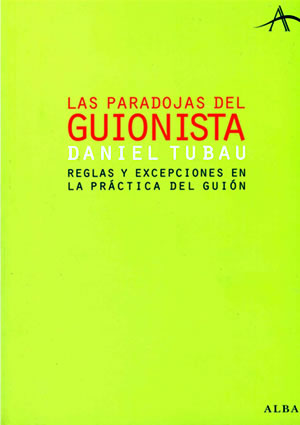
In The viewer is the protagonist, I use the beginning of the movie «The Truman Show» to show the difference between analysing the structure of a script taking into account the character or taking into account the viewer.
To understand the comparative table in context, I reproduce below some paragraphs of the book, although the full explanation can be found in the book itself, pages 21-27.
«Have more or less acts, the structures of the script manuals justify their different parts and accidents, turning points, inciting incidents, climaxes, crises or outcomes depending on what happens to the protagonist. In this scene the protagonist is tempted by the adventure, in this other enters the extraordinary world, here is a turning point because he discovers that they are betraying him, here he is in a crisis because he loses the confidence in his friends, there occurs the climax when he must face his greatest fears, here he must solve his inner problem and then solve the external.
What is the error of all this? The mistake is that the whole structure is explained and analysed according to what happens to the protagonist, that everything is built from the examination of where he is now and where he is after, what he wants and what he gets, what obstacles he encounters and what plans he makes. The mistake is that, when looking at the structure, we are exclusively concerned about where the protagonist is, but that what really matters to a narrator is where the viewer is. »
To see this error clearly and the difference between looking at the structure in one way or another, I propose to analyse the initial minutes of The Truman Show, observing what happens to the viewer and what happens to the protagonist (Truman Burbank). Here is the result.

Let’s examine what we have seen in the beginning of The Truman Show. To whom have all these things happened? Truman or the viewer?
It is obvious that Truman has not seen Christof telling us that viewers are looking for new emotions. Nor has he seen his own wife declaring how happy she feels to play her role, or her best friend saying something similar. He also has not seen the label «LIVE» which appears superimposed on the image when he looks at himself in the mirror. None of that happens to Truman.
Look yourself in the mirror in the morning is not a big deal, really. The structure from Truman’s point of view, from the point of view of the protagonist, does not tell us anything special. But if we analyse the structure from the point of view of the viewer, then many things happen. The viewer knows Truman and also knows all those people who talk about Truman. He suspects that they are cheating on Truman, but he does not know the exact dimensions of that deception. He wonders if Truman knows anything about the big lie. Also, of course, he, the viewer, begins to know what this narrative is about, what the world is going through and who its protagonists are.
If we continue to watch the movie, then we will see how Truman comes out of the bathroom, kisses his wife, is annoyed by the neighbours’ dog … and sees a strange object, a spotlight, falling from a huge blue sky to the highway.
Except for the strange object, it is not about big events. Most important, the strange object fallen from the sky, could be very significant, but Truman does not give any importance to it and follows his normal life. However, for us, the viewers, it is important because, thanks to that accident, we discover two things: the incredible dimensions of that fantasy world and that Truman has no idea of the gigantic scam in which he is involved. This is vital information for us, but not for Truman.

Consequently, Truman does not see everything we see but we do see everything Truman sees, including his face in the mirror. It is to us who happens to us all.»
This analysis, which we can do with any good film (even with any bad film) is a good example of the narrative schizophrenia that theorists and screenwriters often propose to their students when first they talk about the narrative resources to create interest in the viewers and then propose to analyze the structure thinking only what happens to the viewers.
Robert McKee, Syd Field and many other gurus of the script devote hundreds of pages to examine the mechanisms of fiction that can keep the viewer interested, but when they analyse the structure, they forget everything they said and only care about things That can happen to the characters. In my opinion, this attitude implies an astonishing ignorance of the office of the narrator and of the possibilities of narrative art. Our real concern, I insist, is not to think about what happens to the characters but what happens to the viewers.
Of all this (and of many more things) I speak in The viewer is the protagonist.

© Copyright Daniel Tubau 2015, 2017
contact: [email protected]

The viewer is the protagonist
Manual and anti-manual script
(Amazon)
OTHER BOOKS BY DANIEL TUBAU

The paradoxes of the writer
Rules and exceptions in script practice

























Deja una respuesta